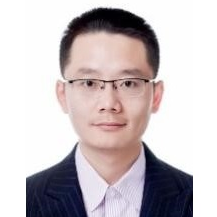Advances in Solid-State Single Photon Detection Devices and Circuits
A special issue of Electronics (ISSN 2079-9292). This special issue belongs to the section "Circuit and Signal Processing".
Deadline for manuscript submissions: 30 June 2024 | Viewed by 300
Special Issue Editors
Interests: semiconductor device physics; optoelectronic devices; single-photon detection; infrared detection and imaging; signal processing circuits
Special Issues, Collections and Topics in MDPI journals
Interests: single-photon detection; light detection and ranging; real-time signal processing; infrared detection and imaging
Interests: superconducting nanowire single-photon detectors; silicon photonics, optical quantum circuits
Special Issue Information
Dear Colleagues,
Advanced information acquisition and interchange technologies by utilizing the nature of a single photon have become an important development trend. Long-range communication, ranging and imaging scenarios such as free-space laser communication (FSCO), quantum key distribution (QKD), three-dimensional light detection and ranging (LiDAR), time-correlated single-photon counting (TCSPC), etc., are pushing the development of solid-state single-photon detection devices and processing circuits. High-performance, robust candidates with the ability to capture a single photon with very low dark count rate (DCR) and afterpulsing probability are presently available, including single-photon avalanche photodiodes (SPADs), photomultiplier tubes (PMTs), multi-pixel photon counters (MPPCs), electron-initiated linear avalanche photodiodes (e-APDs), and superconducting nanowire photodetectors (SNSPDs). These devices cover several semiconductor material systems and a very broad light spectrum, e.g. the AlGaN/GaN ultraviolet SPAD, the visible silicon SPAD and MPCC (also known as silicon photomultiplier (SiPM)), the InGaAs/InP near-infrared SPAD, the shortwave infrared SNSPDs, and the HgCdTe e-APDs. These examples have been available in the forms of both single elements and focal plane arrays (FPAs) with formats up to megapixels. Faster quenching, more accurate timing and faster multiplexing circuits featuring less dead time, lower afterpulsing and high photon detection efficiency have all emerged with the trend from board-level electronics to integrated circuits. In addition, the rapid development of power-efficient area-optimized read-out integrated circuits (ROICs) for SPADs and e-APDs have solidly supported the increase in resolution of single-photon FPAs for various wavelengths.
This Special Issue is aimed at addressing issues that are involved in the design, fabrication, and characterization of solid-state optoelectronic devices and circuits under the single-photon detection regime. This includes:
- Single-photon detection;
- Single-photon avalanche photodiodes (SPADs);
- Geiger-mode avalanche photodiodes (GmAPDs);
- Multi-pixel photon counters (MPCCs);
- Photomultipliers (PMTs);
- Superconducting nanowire photodetectors (SNSPDs);
- Ultraviolet/Visible/Infrared;
- GaN/Silicon/InGaAs/HgCdTe;
- Focal plane arrays (FPAs);
- Active quenching circuits (AQC);
- Time-to-digital converters (TDCs);
- Read-out integrated circuits (ROICs);
- Time-correlated single-photon counting (TCSPC);
- Single-photon-imaging signal processing;
- Single-photon detection circuits;
- Three-dimensional imaging (LiDAR);
- Quantum information processing.
Dr. Yingjie Ma
Dr. Junliang Liu
Prof. Dr. Hao Li
Guest Editors
Manuscript Submission Information
Manuscripts should be submitted online at www.mdpi.com by registering and logging in to this website. Once you are registered, click here to go to the submission form. Manuscripts can be submitted until the deadline. All submissions that pass pre-check are peer-reviewed. Accepted papers will be published continuously in the journal (as soon as accepted) and will be listed together on the special issue website. Research articles, review articles as well as short communications are invited. For planned papers, a title and short abstract (about 100 words) can be sent to the Editorial Office for announcement on this website.
Submitted manuscripts should not have been published previously, nor be under consideration for publication elsewhere (except conference proceedings papers). All manuscripts are thoroughly refereed through a single-blind peer-review process. A guide for authors and other relevant information for submission of manuscripts is available on the Instructions for Authors page. Electronics is an international peer-reviewed open access semimonthly journal published by MDPI.
Please visit the Instructions for Authors page before submitting a manuscript. The Article Processing Charge (APC) for publication in this open access journal is 2400 CHF (Swiss Francs). Submitted papers should be well formatted and use good English. Authors may use MDPI's English editing service prior to publication or during author revisions.
Keywords
- single-photon detection
- single-photon avalanche photodiode (SPAD)
- geiger-mode multi-pixel photon counter (MPCC)
- silicon photomultiplier (SiPM)
- geiger-mode operation
- violet/Visible/Shortwave Infrared
- GaN/Silicon/InGaAs
- focal plane array
- active quenching circuit
- timing digital converter
- time-correlated single photon counting (TCSPC)
- three-dimensional LiDAR
- quantum information processing.







